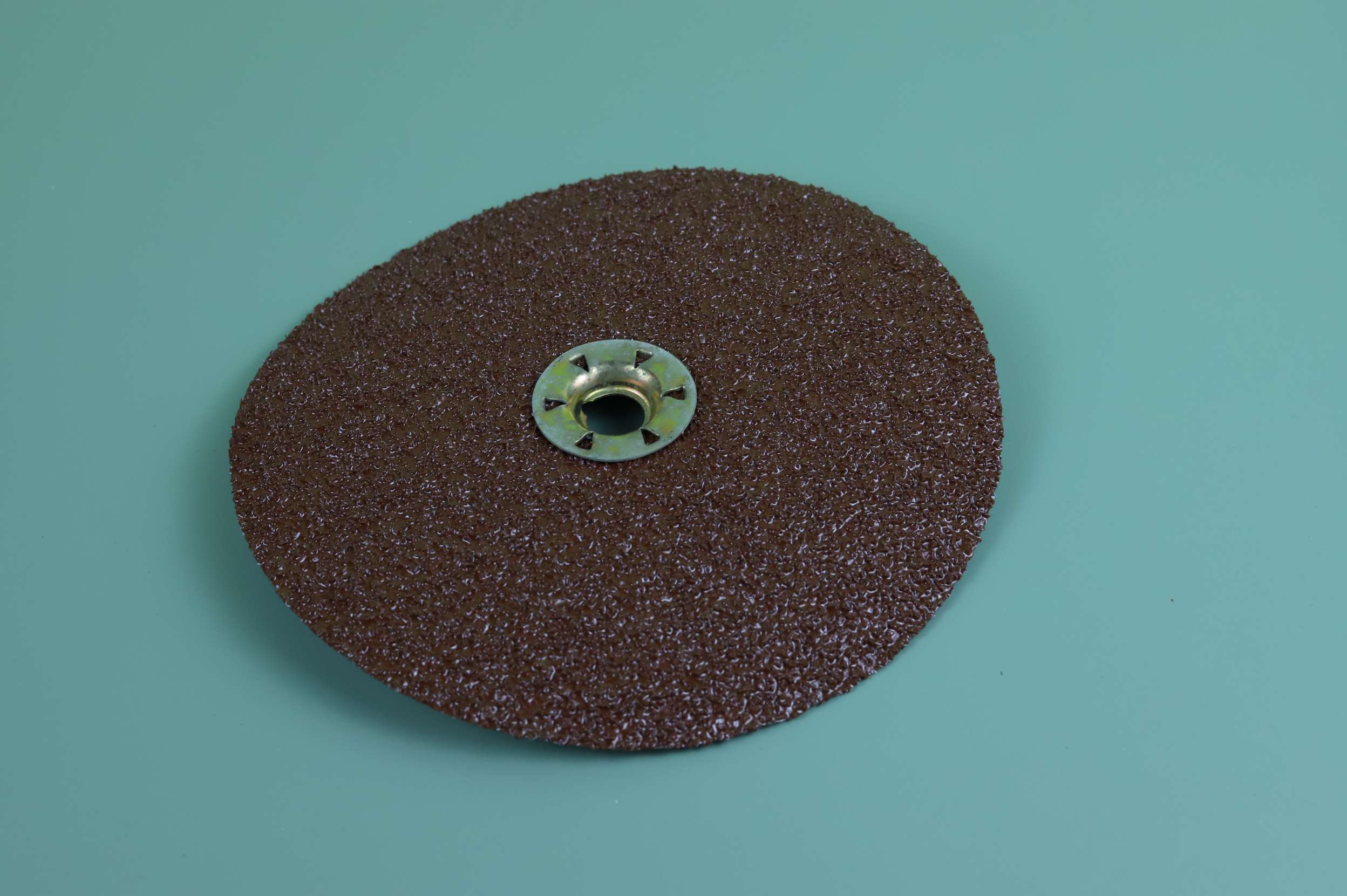Introduction:
In the realm of abrasives, fiber sanding discs have established themselves as indispensable tools, renowned for their durability and consistent performance across various applications. This article aims to delve into the intricacies of fiber sanding discs, exploring the factors that contribute to their enduring performance, the diverse applications they cater to, and the innovations that have elevated their status in the field of surface preparation and finishing.
Understanding Fiber Sanding Discs:
Fiber sanding discs are abrasive tools engineered for material removal, surface blending, and finishing applications. The term “fiber” in their nomenclature refers to the reinforced backing material, often composed of layers of compressed fibers, that lends these discs their robustness. Unlike conventional sanding discs, the fiber variety exhibits exceptional durability, making them particularly well-suited for demanding tasks that require prolonged use and consistent results.
Composition and Construction:
The durability of fiber-sanding discs is intricately tied to their composition. These discs typically feature a blend of abrasive grains – such as aluminum oxide, silicon carbide, or zirconia alumina – bonded to the reinforced fiber backing. The combination of high-quality abrasives and a sturdy backing material forms the foundation for the extended lifespan and resilience of these discs.
Reinforced Fiber Backing:
The reinforced backing, often made from vulcanized fiber or a similar composite material, is a key contributor to the durability of these sanding discs. This backing not only provides structural integrity but also offers enhanced resistance to tearing and deformation during use. As a result, fiber-sanding discs can withstand rigorous conditions, maintaining their effectiveness over extended periods.
Resin Bonding Technology:
The bonding technology employed in fiber sanding discs plays a pivotal role in their durability. Resin bonding enhances the cohesion between the abrasive grains and the backing material, ensuring a secure and long-lasting connection. This advanced bonding technique contributes to the discs’ ability to endure high-speed rotations and substantial friction without compromising their structural integrity.
Applications Across Industries:
Metal Fabrication:
In metal fabrication processes, where precision and durability are paramount, fiber sanding discs excel. These discs are employed for tasks ranging from deburring and weld seam blending to the removal of rust and corrosion. The durable performance of fiber-sanding discs ensures that they can withstand the challenges posed by various metals and alloys.
Woodworking:
Woodworkers benefit from the durability of fiber sanding discs in tasks like shaping, smoothing, and finishing wood surfaces. The reinforced backing provides stability and resistance to wear, making these discs well-suited for demanding woodworking applications that involve different types of wood and varying levels of hardness.
Automotive Refinishing:
The automotive industry relies on fiber sanding discs for refinishing and repair work. Whether it’s preparing surfaces for painting, smoothing body filler, or addressing imperfections, these discs demonstrate enduring performance, allowing automotive professionals to achieve consistent and high-quality results.
Construction and Renovation:
Construction and renovation projects often demand abrasive tools that can endure the challenges posed by concrete, stone, or masonry surfaces. Fiber sanding discs, with their reinforced construction, prove resilient in applications such as surface preparation, concrete grinding, and tile installation.
DIY and Home Improvement:
In the realm of do-it-yourself (DIY) and home improvement, the durability of fiber sanding discs makes them valuable assets. From sanding wooden furniture to tackling rust removal on metal surfaces, these discs cater to a wide array of tasks encountered by hobbyists and homeowners.

Innovations Enhancing Durability:
Advanced Abrasive Materials:
Ongoing advancements in abrasive technology contribute to the durability of fiber-sanding discs. Innovations in abrasive materials, including the use of ceramic grains and engineered abrasives, enhance the cutting efficiency and longevity of these discs, ensuring they remain effective even in the face of challenging materials.
Cooling and Lubrication Systems:
Some modern fiber sanding discs incorporate cooling and lubrication systems designed to mitigate heat buildup during prolonged use. This innovative feature not only enhances the overall durability of the discs by reducing thermal stress but also contributes to maintaining consistent performance over extended periods.
Precision Engineered Flaps:
The design of the abrasive flaps on fiber-sanding discs has evolved to optimize durability. Precision engineering of flap configurations, with considerations for spacing and overlap, ensures uniform wear and efficient material removal. This innovation extends the lifespan of the discs while maintaining a high level of performance.
Anti-Clogging Technologies:
Clogging can compromise the effectiveness of sanding discs, leading to uneven wear and reduced durability. Anti-clogging technologies, such as specialized coatings or additives, prevent the accumulation of debris on the abrasive surface. This ensures that the discs maintain their cutting ability and last longer in challenging working conditions.
Maintenance and Best Practices:
Proper Storage and Handling:
Ensuring the durability of fiber-sanding discs involves proper storage and handling. Discs should be stored in a cool, dry place to prevent exposure to moisture and extreme temperatures. Additionally, careful handling to avoid bending or crushing the discs contributes to their long-term performance.
Regular Inspection and Cleaning:
Regular inspection of fiber sanding discs is crucial to identifying signs of wear, damage, or clogging. Cleaning the discs, either manually or with specialized tools, removes accumulated debris and enhances their cutting efficiency. Addressing issues promptly through cleaning or disc replacement ensures sustained durability.
Appropriate Disc Selection:
Selecting the right type of fiber sanding disc for a specific application is fundamental to optimizing durability. Considering factors such as abrasive type, grit size, and backing material in alignment with the task at hand ensures that the disc performs effectively and endures the challenges presented by different materials.
Conclusion:
The durable performance of fiber-sanding discs stands as a testament to their significance in various industries and applications. From metal fabrication to woodworking, automotive refinishing, and beyond, these discs have become indispensable tools for professionals and DIY enthusiasts alike. Innovations in abrasive technology, coupled with advancements in cooling systems and precision engineering, continue to elevate the durability of fiber sanding discs, ensuring they meet the evolving demands of modern surface preparation and finishing. As these abrasives remain at the forefront of industry standards, their enduring performance cements their status as essential components in the toolkit of those who seek efficiency, precision, and reliability in their abrasive applications.
Related Products








